Home renovations can be surprisingly addictive. One minute, you’re browsing flooring options at your local hardware store—then, you’re picking out paint colors and debating whether you need new kitchen and bathroom appliances, too.
Upgrades like these can increase the value of your home and make it more comfortable to live in. But if you’re smart about them, you can also lower your carbon footprint, save money on energy, and protect the planet.
Below, we’ll show you how Roof Maxx and the other sustainability upgrades on this list can help you save money while renovating your home and working towards a greener future for everyone.
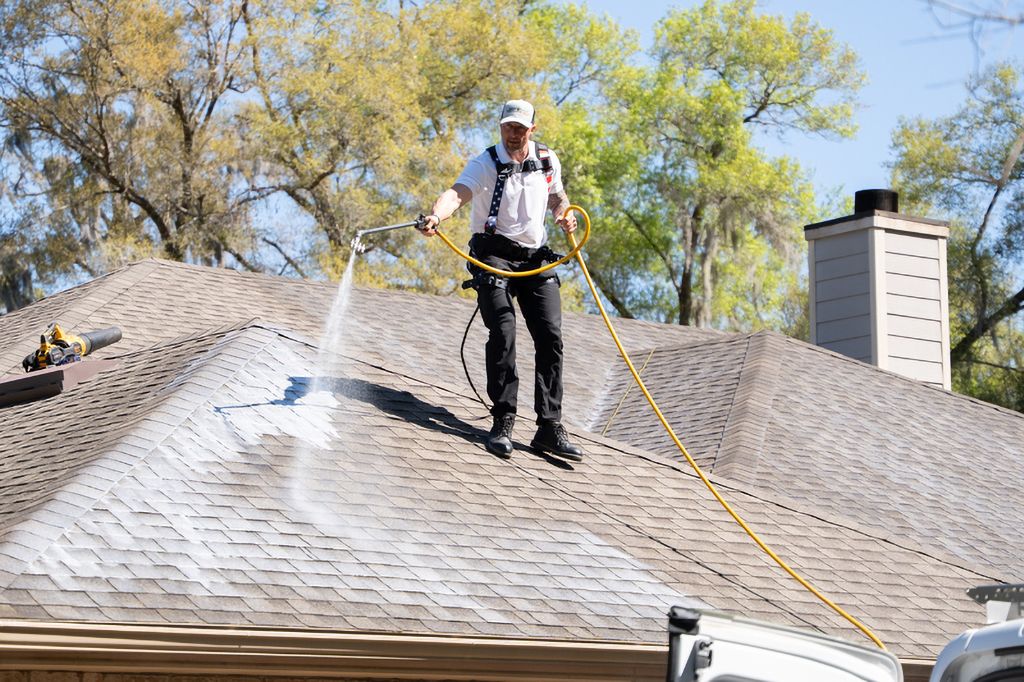
Tearing off an existing roof and laying new shingles is an exhaustive and expensive process that can disrupt your life for days. With an average price tag of up to or over $30,000, most homeowners understandably don’t want to replace their roof until it’s absolutely necessary.
Roof Maxx is a soy-based solution that makes aging asphalt shingles flexible and durable again. Each treatment can extend the life of your roof by up to five years, which benefits you, your wallet, and the environment, too.
Why pay for a new roof when you can get more life out of your asphalt shingles? Make a smarter choice and protect the environment by scheduling a treatment today.
Solar energy is quite literally free power. With energy costs on the rise and climate change making temperatures more extreme, taking advantage of it is financially sensible and helps you lower your carbon footprint, too.
Installing solar panels can help you:
Installing batteries alongside your panels will help you make the most of solar by ensuring you have power when the sun is out and when it isn’t. In some areas, you may even be able to sell the excess energy you produce back to the grid for a small fee!
Read More: What is Drip Edge, and Why Is It Important On a Roof?
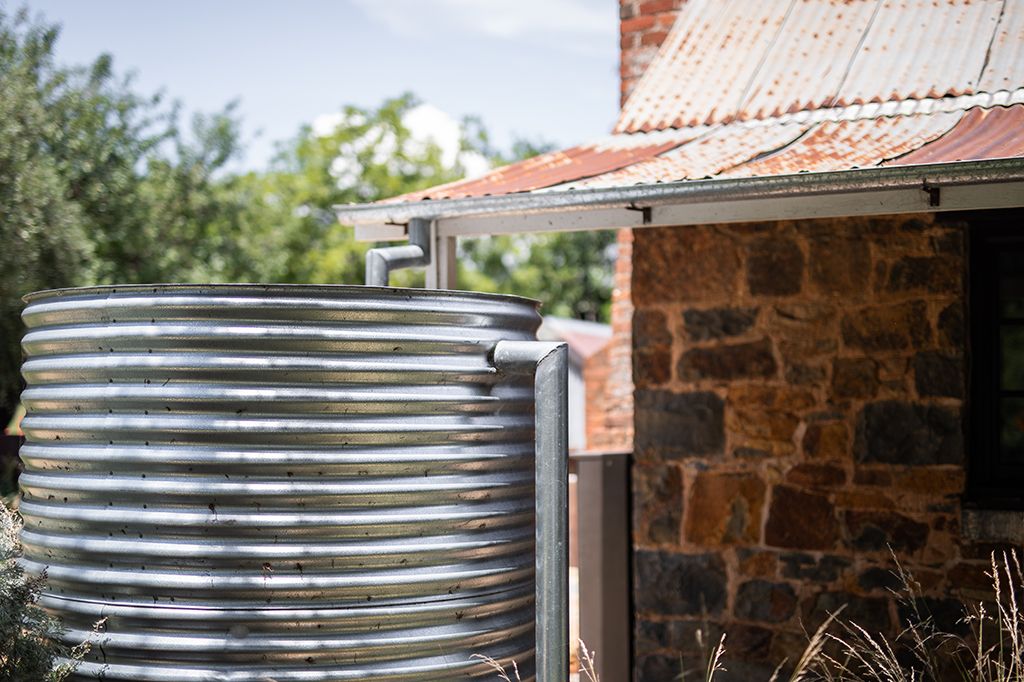
Rainwater is one of the most overlooked resources in the US. In areas where droughts and dry spells are common, installing a collection system can help you stock up on water you can use on an as-needed basis at any time.
Harvesting rainwater is legal in most areas of the U.S., but some areas do make it mandatory to use specific equipment. You can use the Department of Energy’s mapping tool to check the regulations for your region or state.
Windows don’t always seem like a sustainability issue, but single-pane windows with rickety frames are notorious for letting heated or cooled air escape. When your HVAC system has to work harder to keep temperatures stable, your carbon footprint increases.
Upgrading to double or triple-pane windows gives you an immediate boost in insulation and halts heat loss.
For best results, look for windows with:
Want to do a little window shopping? We rounded up some of the best energy-efficient windows and doors for 2025 to make it easier for you.
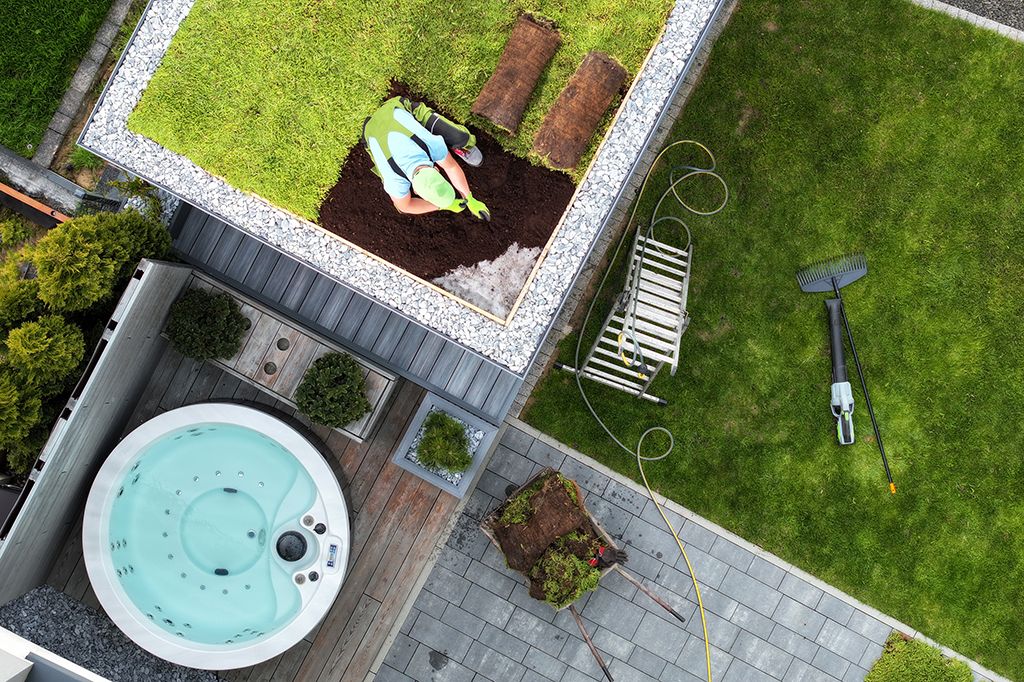
The term “green roof” can mean that your shingles are more environmentally-friendly and made from natural fibers. But it also refers to rooftop systems specifically designed to support plant growth and vegetation, which is what we’ll talk about here. These systems are typically made up of layers of soil, granules for drainage, and other materials over a waterproof base.
Having living plants growing on your roof looks good, but that’s far from the only benefit for you or the environment.
Green roofing systems can also:
Green roofs work best when they’re installed on flat roofs with plenty of space, but they can be installed on a sloped roof, too. The thicker the layer of soil, the more options you’ll have for growing plants other than grass.
Insulation keeps your home warm and cozy in the winter and cool and comfortable in the summer. With temperature extremes growing increasingly common here in the US, it’s more important than ever for your insulation to perform well.
You don’t have to turn to harsh chemicals or plastics just to seal up your home. You can get great results from eco-friendly alternatives, like:
All of these products effectively reduce energy loss through walls, ceilings, and attics when they’re installed correctly. Polystyrene is less eco-friendly to produce, but is such an effective insulator that the benefits offset the impact of the manufacturing process.
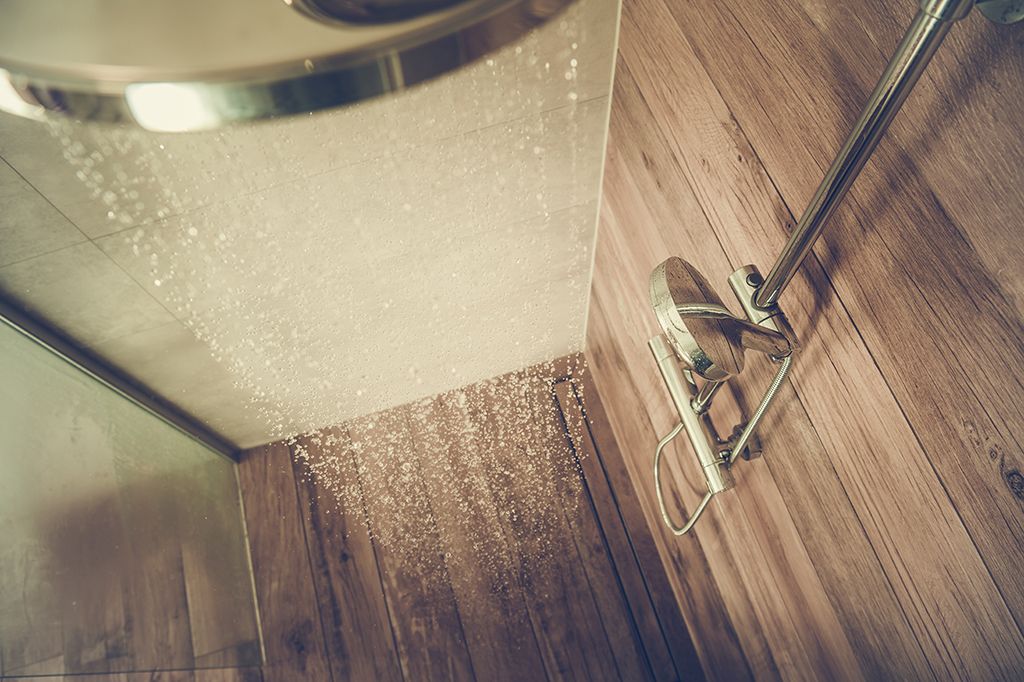
Rainwater harvesting is just one part of water conservation. Replacing standard fixtures and faucets with low-flow alternatives can help you reduce the amount of water you use for bathing, washing clothes or dishes, and handling your business in the bathroom.
Worried about water pressure in the shower? You’ll be pleased to know that modern low-flow fixtures perform much better than they did 10 or 20 years ago. Most contain special aerators, pressure-compensating valves, and flow regulators that keep the pressure consistent.
Just like your roof, flooring takes a lot of abuse over the years. If you have pets or kids, you can expect it to wear out even faster. Cheap vinyl or plastic linoleum flooring can seem like a great option, but they’re bad for the environment, don’t last, and typically need to be replaced every 10 or 15 years.
To get more life out of your floor and make it more sustainable in the process, switch to a more eco-friendly material like:
Sustainable flooring options like these can help reduce heat transfer through the floor, lowering your energy bills. But the boost in durability they provide will make your flooring last longer, too, so you aren’t forced into early replacement.
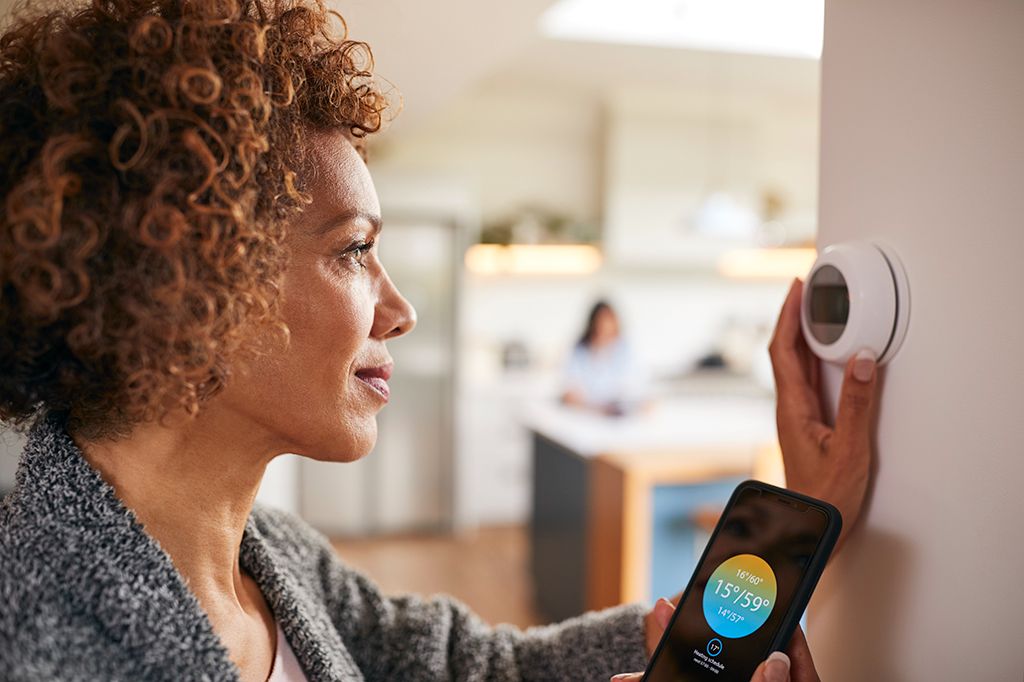
Smart home devices don’t directly benefit the environment, but they do give you more control over the way you use energy. Being able to monitor, adjust, and schedule your lighting, smoke or CO alarms, HVAC, and water temperature from your phone reduces waste.
Just about everyone has left the home for work without turning off the lights or adjusting the thermostat down a notch at least once. With smart home tech, you now have an option to fix from where you are—or just adjust heating and cooling from the couch without getting up.
Native plants are already adapted to the local environment and climate, so they’re usually effortless to grow and thrive even if you don’t have a green thumb.
They aren’t typically invasive or harmful to plants or animals, and may even:
When you plant native, you’re essentially adapting your property to the local environment instead of constantly fighting to hold it back. That means you’re supporting biodiversity in your own backyard without sacrificing your patio time in the process.
You don’t have to spend a fortune on fancy bells and whistles or the latest technology to lower your carbon footprint. Whether you decide to go all-out with new windows or you’re just letting your yard grow wild again, you’re still making a difference—and every effort counts
.
Your roof plays a critical role in protecting your home and keeping temperatures stable inside. That’s why starting with Roof Maxx makes so much sense. You can extend the life of your shingles and cut back on the amount of waste your home produces over time, too.
Trust Roof Maxx’s sustainable, eco-friendly roof rejuvenation solution to roll back the clock on aging asphalt shingles.
Find a dealer in your area now to get a free, no-obligation quote.
With our five-year, transferable warranty, you’ll enjoy the peace of mind that your roof and entire home are protected.